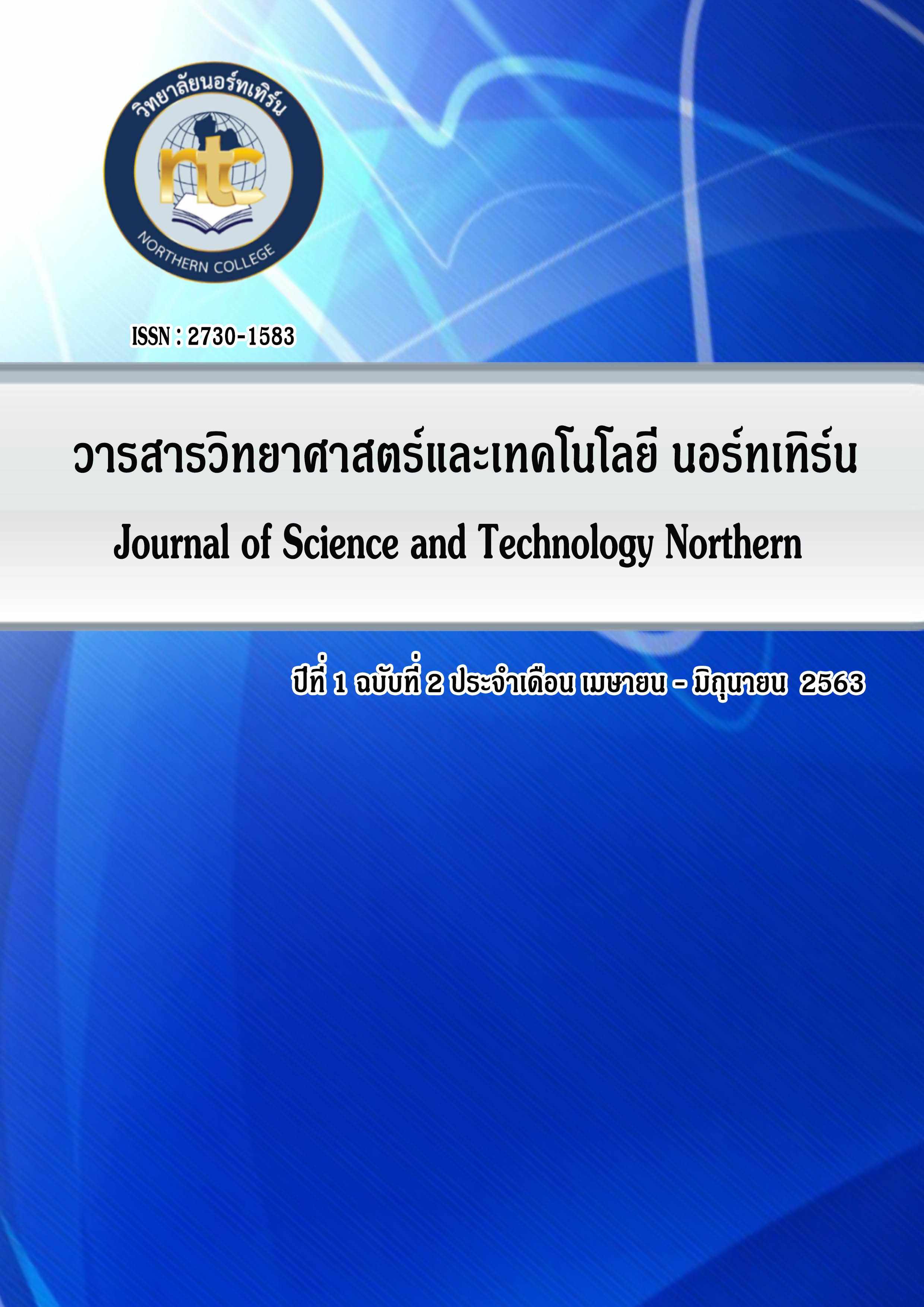การขจัดทองแดงออกจากน้ำที่ปนเปื้อนด้วยการใช้ไบโอชาร์ที่เตรียมจากซังข้าวโพด
คำสำคัญ:
ถ่านไบโอชาร์, ทองแดง, การดูดซึมบทคัดย่อ
วัตถุประสงค์ของงานวิจัยนี้ คือเพื่อขจัดไอออนทองแดงออกจากน้ำด้วยถ่านไบโอชา ร์ ซึ่งถ่านไปโอชาร์ถูกเตรียมด้วยกระบวนการไพโรไลซีส โดยใช้ซังข้าวโพดที่เผาที่อุณหภู- มิ 850 องศาเซลเซียสในบรรยากาศที่มีออกซิเจนต่ำ ถ่านไบโอชาร์ที่ได้ถูกนำมาตรวจคุณ ลักษณะด้วย SEM, EDS และ XRD ซึ่งพบว่ามีพลึกของแกร์ไฟต์และคาร์บอนเกิดขึ้นและมีรูพรุนอยู่ในช่วง 10-15 ไมโครเมตร หลังจากนั้น ไบโอชาร์ถูกบดด้วยเครื่องบดแฮมเมอร์มิลและคัดแยกด้วยตะแกรงร่อนเป็น 3 ช่วง (105-149, 149-177 และ 177-210 ไมโครเมตร) และนำไปจุ่มลงในสารละลายทองแดง 5-60 นาที เวลาในการดูดซับทองแดงจนอิ่มตัวของผงไบโอชาร์ทุกขนาดเท่ากับ 15 นาที มีอัตราการดูดซับสูงสุดคือ 0.8 มิลลิกรัมต่อกรัมนาที ด้วยขนาดอนุภาคที่อยู่ในช่วง 105-149 ไมโครเมตร
เอกสารอ้างอิง
Ahmad, M., Rajapaksha, A.U., Lim, J.E., Zhang, M., Bolan, N., Mohan, D.,Vithanage, M., Lee, S.S., Ok, Y.S., (2014). Biochar as a sorbent for contaminant management in soil and water: a review. Chemosphere 99, 19-33.
Beesley, L., Moreno-Jimenez, E., Gomez-Eyles, J.L., Harris, E., Robinson, B., Sizmur, T., (2011). A review of biochars' potential role in the remediation, revegetation and restoration of contaminated soils. Environ. Pollut. 159 (12), 3269-3282.
Dragan ES, Dinu MV. (2009). Removal of copper ions from aqueous solution by adsorption on ionic hybrids based on chitosan and clinoptilolite. Ion Exchange Letters.2,15-8.
Gao, L.Y., Deng, J.H., Huang, G.F., Li, K., Cai, K.Z., Liu, Y., Huang, F., (2019). Relative distribution of Cd2+ adsorption mechanisms on biochars derived from rice straw and sewage sludge. Bioresour. Technol. 272, 114-122.
Jarup L. (2003). Hazards of heavy metal contamination. Br Med Bull.68: 167-82.
Kumar M, Singh S, Mahajan RK. (2006). Trace level determination of u, zn, cd, pb and cu in drinking water samples. EnvironMonit Assess.112 (1-3), 283-92.
Olivares M, Pizarro F, Speisky H, et al. (1998). Copper in infant nutrition :safety of world health organization provisional guideline value for copper content of drinking water. J Pediatr Gastroenterol Nutr. 26(3),251-7.
Salmani M.H et al. (2012). Removing Copper from Contaminated Water Using Activated Carbon Sorbent by Continuous Flow. Journal of Health Researches. 1(1), 11-18.
ดาวน์โหลด
เผยแพร่แล้ว
รูปแบบการอ้างอิง
ฉบับ
ประเภทบทความ
สัญญาอนุญาต
ลิขสิทธิ์ (c) 2020 วารสารวิทยาศาสตร์และเทคโนโลยีนอร์ทเทิร์น

อนุญาตภายใต้เงื่อนไข Creative Commons Attribution-NonCommercial-NoDerivatives 4.0 International License.







